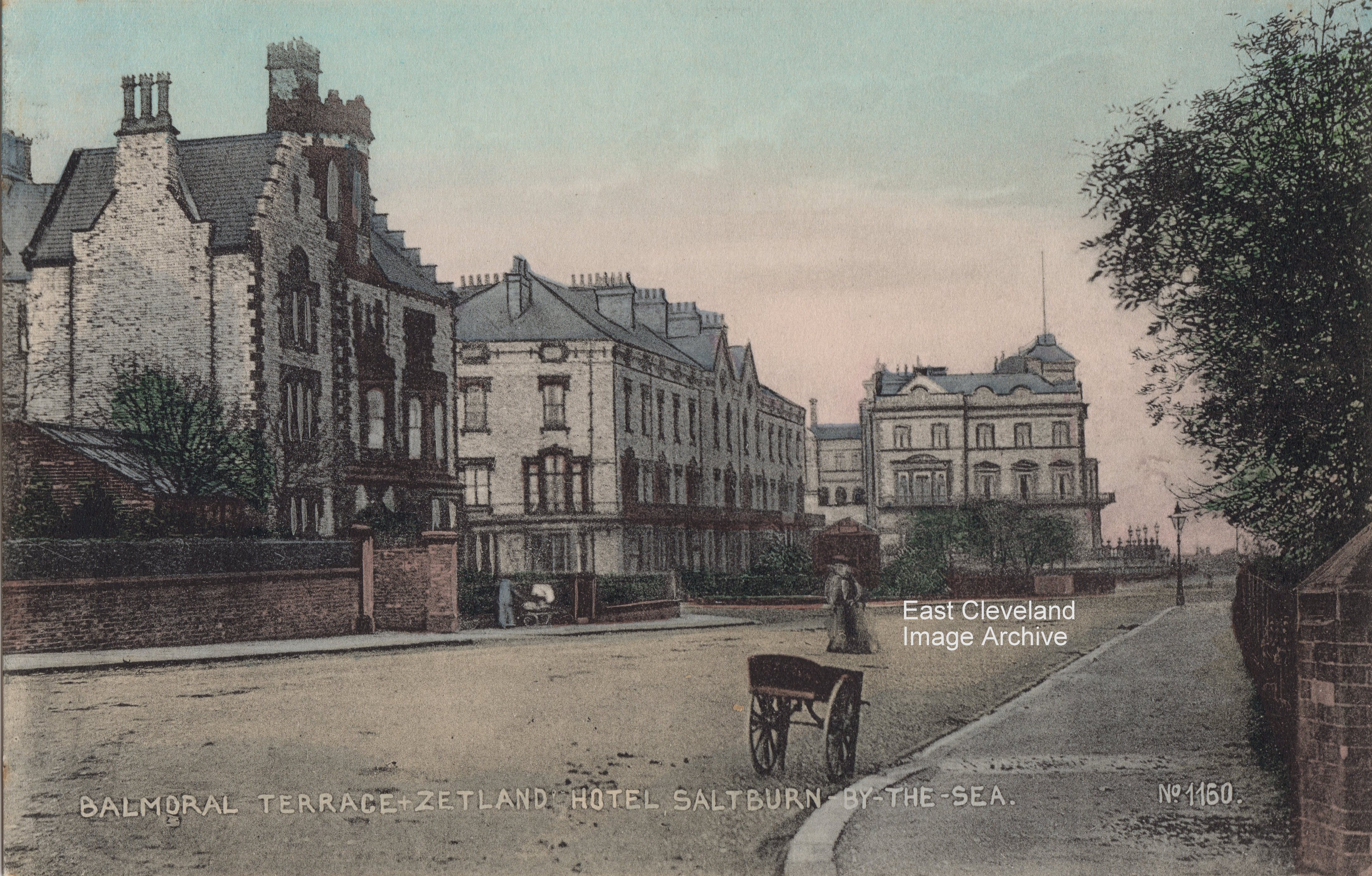
A further Phoenix postcard view from Glenside towards Balmoral Terrace and the Zetland Hotel; all the buildings were faced with the distinctive Pease bricks, a feature of many of the buildings in this ‘planned’ seaside resort. Brittain and Wright of Stockton; who produced the Phoenix series would not have far to travel to undertake any photography for this series of images of Saltburn; just hop on the train in Stockton and down the line to Saltburn! Balmoral Terrace was just across the end of Windsor Road (the Towers being on the opposite corner); the first houses on Balmoral Terrace served for many years as the dormitories for boarders at the Towers school), as the school was listed in Bulmers Directory of 1890 it would be in business at a similar time as this image.Callum Duff advises: “Saltburn was not in fact ‘planned’ to be a seaside resort. George Dickenson’s original plans for the town did not include beach amenities and access to this part of town was discouraged. The main attraction was The Valley Gardens and property overlooking this feature was considered most desirable. George Dickenson was replaced by John Anderson in 1867 and it is he that we should thank for developing beach facilities. Having been refused permission by the SIC to build a hotel on both Glenside and on the opposite corner of Milton Street, adjacent to The Zetland Hotel, Anderson was left with the option of developing a sizeable site on the soon to be named, Britannia Terrace. With no view of the valley to speak of, Anderson needed his own attraction and instigated the formation of the Saltburn Pier Company after a meeting at his newly-opened Alexandra Hotel in October 1867. This is why Saltburn Pier was built directly in front of the hotel. Balmoral Terrace is its own entity between Glenside (pictured here) and Dundas Street East. They are the first houses and also the last!” Callum also advises on another claim to fame for Balmoral Terrace: “Chris Scott Wilson says in his book, ‘The History of Saltburn’ says ‘After Alexander Graham Bell demonstrated his invention called ‘The Telephone’ at the Philadelphia Exhibition in 1876, one of the first telephone calls is believed to have been made in Saltburn. After reading of Bell’s invention, a Mr Irvine built one himself. While staying at Sir Francis Fox’s house ‘Cliffden’, he connected a line to Judge Ayrton’s house in Balmoral Terrace over the Ha’penny Bridge and they had a conversation’.”
Image courtesy of Julie Tyrka and thanks to Callum Duff for the updates.
Saltburn was not in fact ‘planned’ to be a seaside resort. George Dickenson’s original plans for the town did not include beach amenities and access to this part of town was discouraged. The main attraction was The Valley Gardens and property overlooking this feature was considered most desirable. George Dickenson was replaced by John Anderson in 1867 and it is he that we should thank for developing beach facilities. Having been refused permission by the SIC to build a hotel on both Glenside and on the opposite corner of Milton Street, adjacent to The Zetland Hotel, Anderson was left with the option of developing a sizeable site on the soon to be named, Britannia Terrace. With no view of the valley to speak of, Anderson needed his own attraction and instigated the formation of the Saltburn Pier Company after a meeting at his newly-opened Alexandra Hotel in October 1867. This is why Saltburn Pier was built directly in front of the hotel.
Balmoral Terrace is its own entity between Glenside (pictured here) and Dundas Street East. They are the first houses and also the last!
Chris Scott Wilson says in his book, ‘The History of Saltburn’ says ‘After Alexander Graham Bell demonstrated his invention called ‘The Telephone’ at the Philadelphia Exhibition in 1876, one of the first telephone calls is believed to have been made in Saltburn. After reading of Bell’s invention, a Mr Irvine built one himself. While staying at Sir Francis Fox’s house ‘Cliffden’, he connected a line to Judge Ayrton’s house in Balmoral Terrace over the Ha’penny Bridge and they had a conversation’.